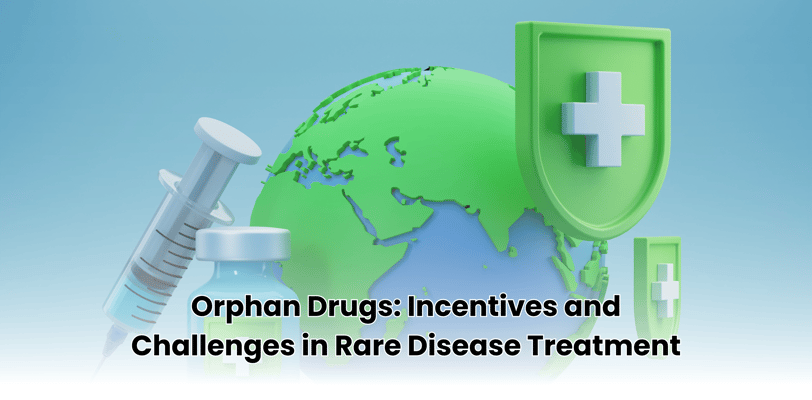Orphan Drugs: Incentives and Challenges in Rare Disease Treatment
Rare diseases affect a small percentage of the population, yet their impact on patients and families is profound. Orphan drugs, which are specifically developed to treat these rare conditions, play a crucial role in improving patient outcomes. However, due to high research costs, limited patient populations, and regulatory hurdles, developing orphan drugs presents unique challenges. Governments and regulatory bodies worldwide have introduced incentives to encourage pharmaceutical companies to invest in rare disease treatments. Let’s explore the incentives and challenges shaping the orphan drug landscape.
2/6/20252 min read


Incentives for Orphan Drug Development
1. Regulatory and Financial Support
Governments offer regulatory incentives to reduce the burden of orphan drug development. These include:
Orphan Drug Act (ODA) in the U.S.: Provides tax credits, grants, and market exclusivity.
European Medicines Agency (EMA) Support: Offers fee reductions and extended market protection.
Priority Review and Fast-Track Approvals: Accelerates the drug approval process, reducing time to market.
2. Market Exclusivity
One of the biggest incentives is market exclusivity, where companies receive protection from generic competition for a set period:
U.S.: 7 years of exclusivity
Europe: 10 years of exclusivity
Japan: 10 years of exclusivity
This encourages investment by ensuring a profitable period before competitors can launch similar drugs.
3. Grants and Tax Benefits
Governments and non-profit organizations provide financial grants and tax incentives to offset R&D costs. In the U.S., companies can claim up to 25% tax credit on clinical trial expenses.
4. Research and Development (R&D) Support
Public-private partnerships and collaborations with academic institutions provide additional funding and technical expertise to advance rare disease research.
Challenges in Orphan Drug Development
1. High Development Costs and Limited Market
Developing a new drug is expensive, with costs running into hundreds of millions of dollars. Since rare diseases affect fewer patients, the return on investment is significantly lower than for common diseases.
2. Complex Clinical Trials
Conducting clinical trials for orphan drugs is challenging due to:
Small patient populations
Difficulty in recruiting trial participants
Lack of disease understanding and biomarkers
3. Pricing and Affordability Issues
Due to high R&D costs and limited patient pools, orphan drugs often come with high price tags. This raises concerns about affordability and access, especially in low-income regions.
4. Regulatory Hurdles and Approval Delays
While incentives exist, regulatory pathways remain complex. Companies must navigate stringent approval requirements, making it difficult for small biotech firms to enter the market.
Future Outlook
Advancements in gene therapy, precision medicine, and AI-driven drug discovery are improving the feasibility of orphan drug development. Additionally, continued government support and patient advocacy efforts are crucial to addressing current challenges. As innovation continues, the landscape of orphan drugs is expected to evolve, bringing hope to millions affected by rare diseases.
Conclusion
Orphan drugs are essential in treating rare diseases, yet their development is fraught with financial, regulatory, and logistical challenges. While incentives like market exclusivity, tax benefits, and research grants help stimulate investment, more collaborative efforts are needed to ensure affordable and accessible treatments. By fostering innovation and streamlining regulatory processes, the pharmaceutical industry can drive significant progress in rare disease treatment.
